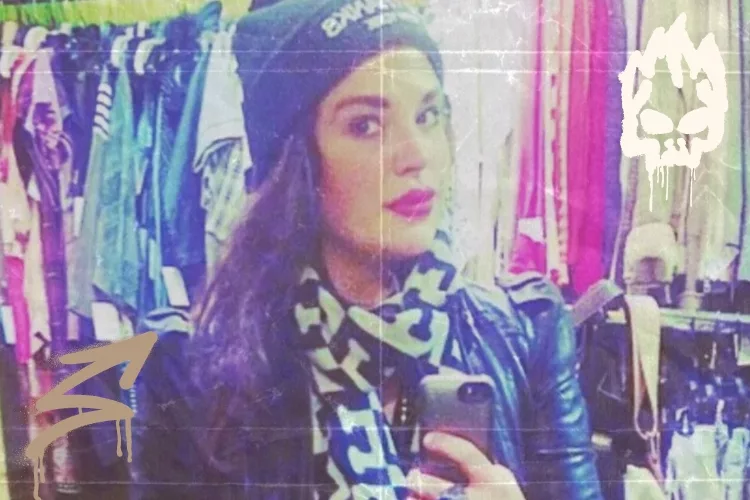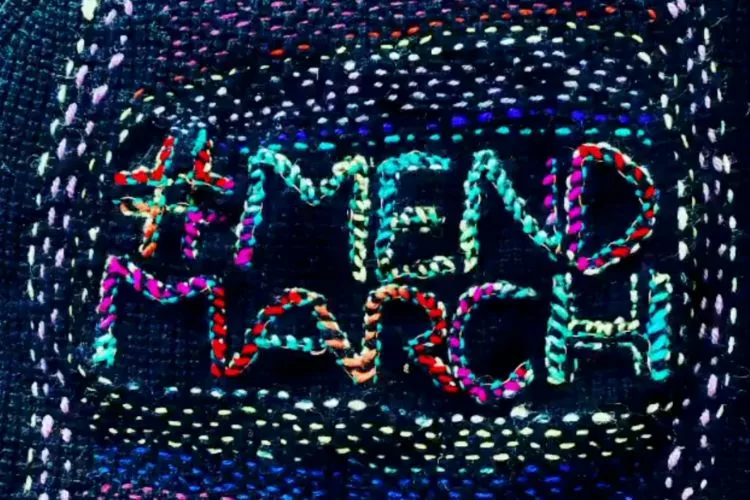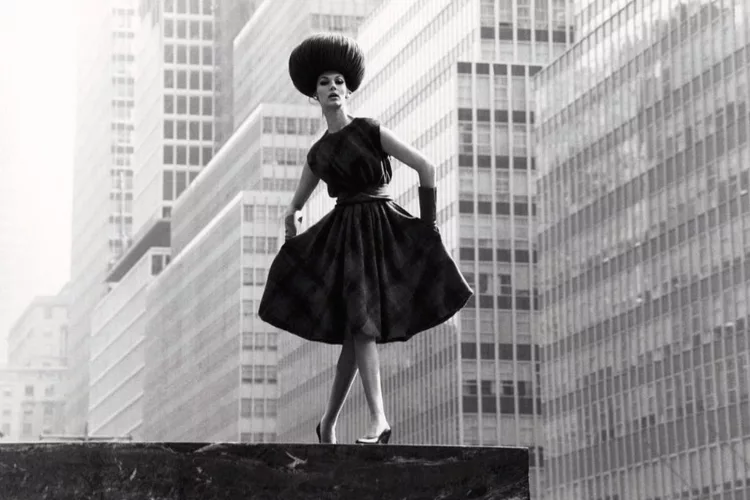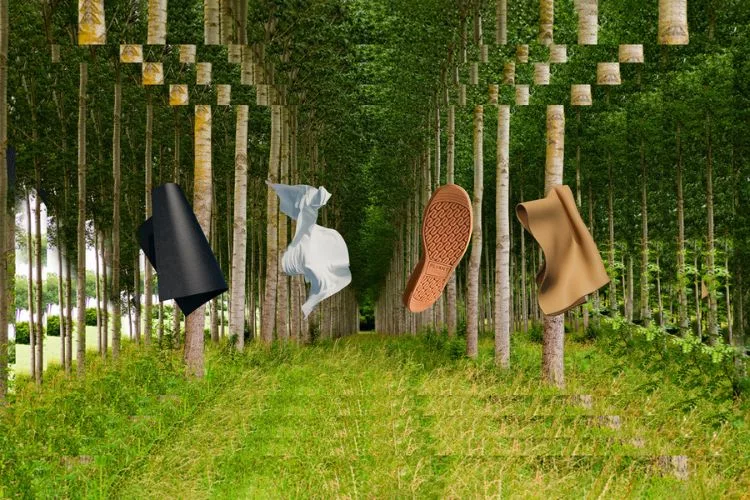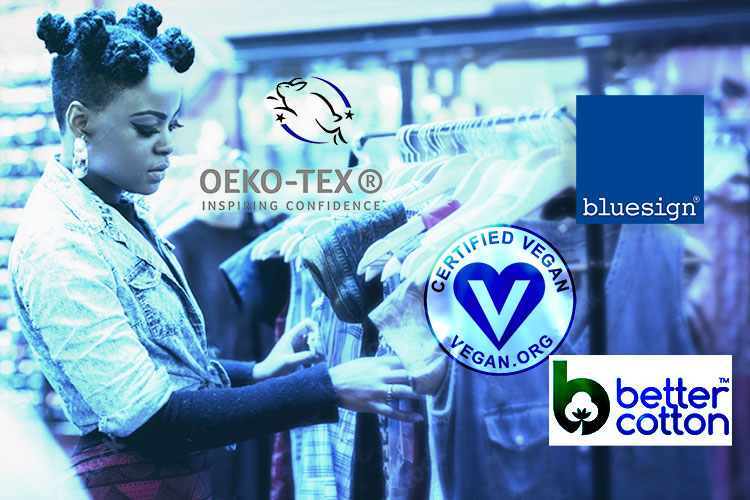There’s no one answer but there are ways of answering it for yourself…

Tara St. James was one of the first names I heard when I first learned about “Sustainable fashion” almost a decade ago. She was involved with the Brooklyn Fashion + Design Accelerator as well as designing her own fashion line, Study NY.
Our writer Olivia is a former intern at Another Tomorrow where Tara has been the VP of Supply Chain, Sustainability & Culture. The discussion about “what exactly is sustainable fashion” is an ongoing one at No Kill Mag and recently Olivia suggested she might interview Tara on the subject. I jumped on it and Tara graciously agreed. I was curious as to her current thoughts on sustainability and fashion as it seems ever changing and at times overwhelming. Her answers are interesting and thought provoking and I’m pleased to share them with you. –Katya Moorman, EIC, NKM. Interview by Olivia Baba
OLIVIA: Hi Tara! Thank you so much for chatting with me today. I really appreciate it. So, the first question I wanted to ask you is, basically, what are your guiding principles when looking for sustainable materials and ethical sourcing?
TARA: Are we talking specifically about Another Tomorrow, or more generally?
Generally.
Well, actually I might have shot myself in the foot with that because part of the work I do when I consult with brands or teach students about sustainable sourcing is say that there’s no one silver bullet. So creating a set of guiding principles is the most important thing that you can do. Otherwise you can get lost trying to check too many boxes.
At Another Tomorrow we have three sets of guiding principles. The first centers on animal welfare and dictates the types of animal fibers that we can and cannot use. For example, no fibers or materials that require the killing of the animal, so no leather or animal skins. No conventional silk.
We do use wool and piece silk, because it is not necessary to kill the animals in that process. But we work with farms and manufacturers that are being really careful around animal welfare issues.
Now if a brand has a vegan stance, or is very cautious about that, they’ll likely choose not to use any animal fibers at all. The downside to that is that the alternatives to animal fibers tend to be synthetics or plastic.
So going back to Another Tomorrow’s pillars – environmental welfare is a second pillar, and then human welfare is the third.
And there are some cases where there’s a conflict between these three. Vegan leather is certainly one of them. That’s why we have abstained from using it altogether as a brand, but other companies might choose to use a plastic based Vegan leather versus a regular leather because their stance is no animals. You have to weigh the pros and cons of each, and at the moment the industry isn’t providing enough innovation. It’s working on it – full speed ahead. But it’s just not commercialized or widely available yet. These include ones that are vegetable based – pea or cactus leather, and the pineapple leather and alternatives like mushroom leathers and things like that.
Then, finally, human welfare. Looking at paying a living wage to everyone working in the supply chain, especially down to the farm level for fibers. Because that’s where there’s a lot of discrepancies with wage gaps.
So choose a focus –whether it’s reducing chemical impacts or using natural dyes and certified organic materials, or only using traceable materials that go back to one origin…. Find some things that are important to you and that you can do.
That was such a thorough and amazing answer! Playing off of that, how do you recommend that consumers build their own guiding principles, or navigate all of the confusing sustainability terms?
Mistra Future Fashion was a research program based out of Sweden that collaborated with University of Arts London and came up with a series of sustainable strategies. It’s called Ted’s Ten and it was first created 20 years ago! (Ted for Textile Environment Design)
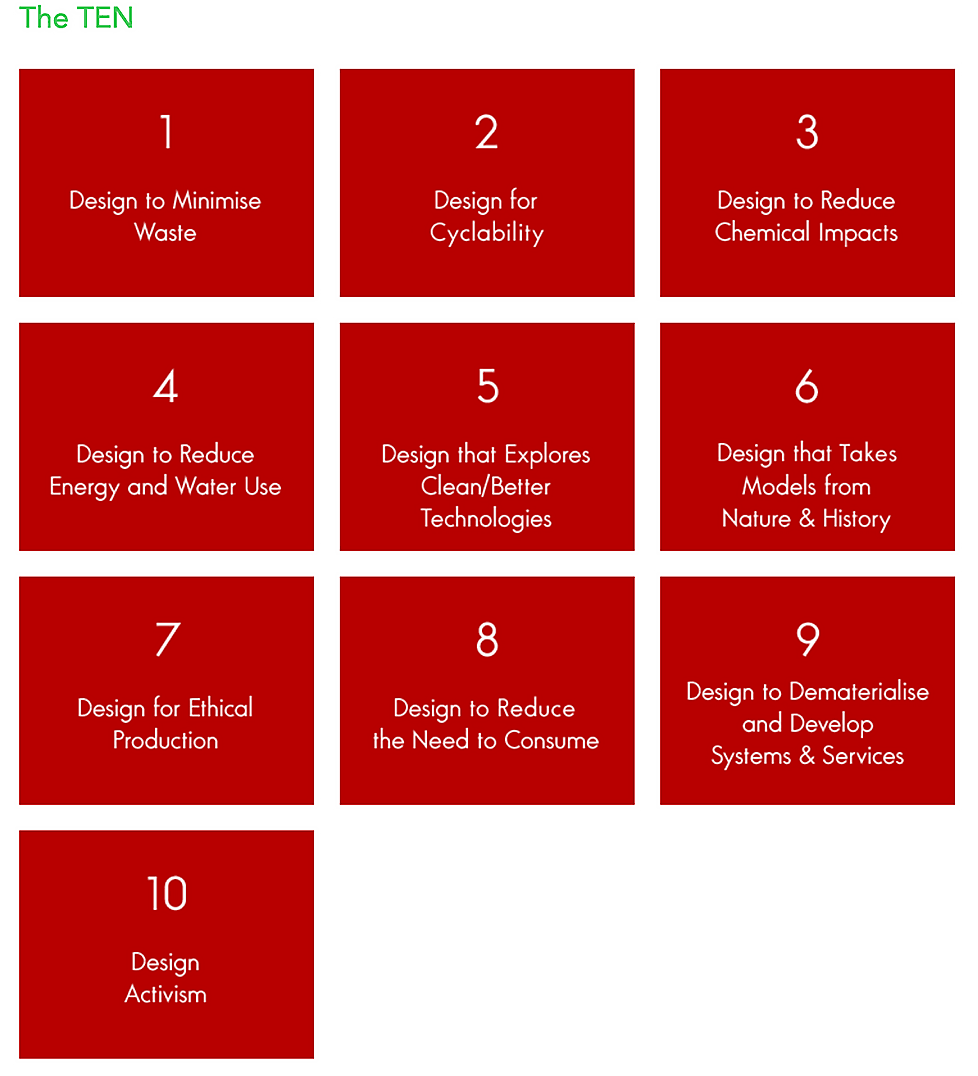
There were ten strategies around sustainable design including: designing for recycling or circularity, as well as things like reducing chemical impacts from reducing water usage.
Unfortunately, or maybe fortunately, the best advice I can give is just use your intuition like –breathe through all of these: What is resonating with you, which of these principles excites you? It’s not scientific at all. What do you feel passionate about here? And almost everybody has something.
As a business, it’s a little bit harder to do that, because it’s not just one person. That’s why I think it’s so important that Vanessa’s voice as the founder of Another Tomorrow has been very clear about what she identifies with in these strategies. And it’s coming from her very authentically.
For an established business that’s trying to become sustainable it’s more challenging because you’re trying to take into account your customer’s needs and your stakeholders, and it’s not always about top down.
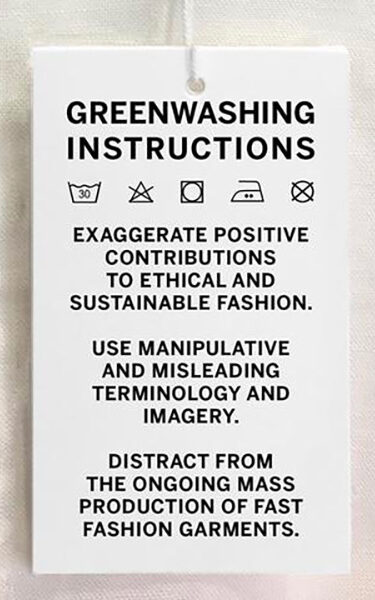
From your perspective how can consumers detect whether there’s greenwashing going on? Especially with traditional brands now talking about sustainability, and everyone using this buzzword?
That is the hardest thing, I think. Listen. I consider myself very educated in this space, and I think I’m fairly knowledgeable, and I still find it hard to read through brand messaging. I mean there’s some instances where it’s obvious. You can tell right away that what the brand is claiming to do and see that what they’re actually doing just doesn’t match up. And in other cases I’m surprised – like, “oh, I thought that that was legitimate, and they were actually doing that…” (but no!) It’s quite frustrating, so I can only imagine coming from –I’ll say an uneducated place. And I don’t mean that as a pejorative. I’ve been doing this for twenty years, and I’m still learning. I can’t expect the average consumer who has nothing to do with sustainability, let alone the fashion industry to know how to navigate this space.
Besides just doing a ton of research or trusting what the brand is saying, the best way to do it would be to reach out and ask them questions. Through DMs and social media. Or email their customer service, and See what their responses are. If the response seems very formulaic and pre-written it’s not good.
Ask brands things like: Do you know where your cotton comes from? I don’t think you need to be able to evaluate the answer; the point is, are you getting an answer? And are you getting an authentic answer? And are they willing to engage with customers around questions and answer those questions realistically and timely. If it takes them like six weeks to come back with an answer that’s a bit weird.
I think that’s really important. But supporting smaller brands or local businesses is always, I think, just easier. I realize it’s probably more expensive, because smaller brands have to charge higher prices. But generally they’re not out there greenwashing.
So based on that do you think that fast fashion and sustainability can coexist?
Look at the business model: Fast fashion is inherently flawed because their main purpose is a fast response time, low quality, quick turnaround, and consistent sales. None of that resonates with sustainability. I think that there’s ways for them to use more responsibly made materials, or stay away from virgin materials like synthetics or unverified wool or conventional cotton. Recycled fibers are probably the easiest step for them, because they tend to be kind of somewhat cost neutral –like recycled polyester.
But that’s still not addressing labor issues and how much they pay their workforce, nor how much of their product is going to landfill. What are they doing about it? I look to brands like H&M, who obviously fall into that fast fashion category, but are also spending a lot of money and brain trust and time on how to solve the problems that they’ve created, and how to invest in the next generation of materials and manufacturing. But I mean that’s the long answer. The short answer is probably no.
Yeah, it’s tough for sure. I know it’s so hard, because there aren’t clear standards, but are there any certifications that consumers can look for?
There’s very few certifications of a brand itself. I would look to B-Corp as one of those. It’s not really a certification, but in order to be B-Corp certified you have to meet certain criteria and have a certain point score to even be considered for certification. There are a couple of others within that competitive space. But I think that’s one that most individuals recognize.
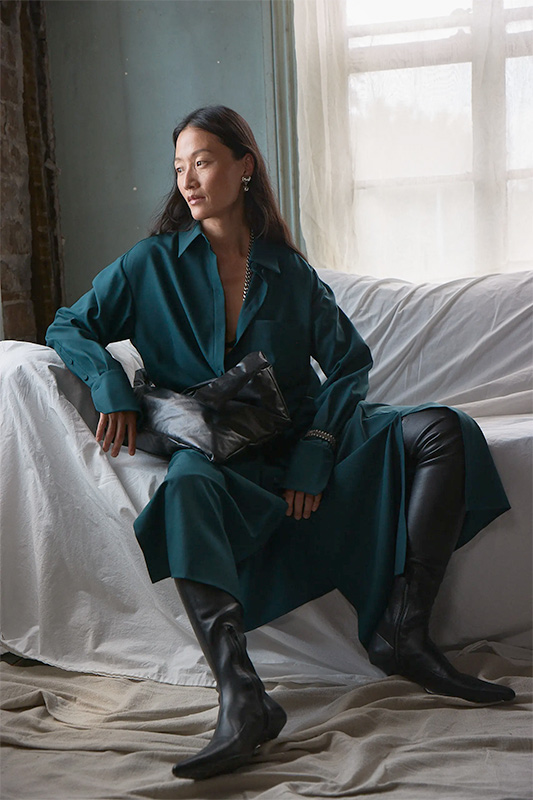
Do you think that there will ever be a time where there is more transparency, and where people can see where everything is sourced? And you know, almost think of it like a nutrition label for your clothes.
Absolutely! It’s already happening to a certain degree. You know that we do it in Another Tomorrow on the QR Codes on the products. But that is very heavily customized, because we wanted to do it and nobody was doing it.
And now there’s a whole slate of tech products that are becoming available. And it’s really exciting, because they will collect the certifications and help us verify them and map out our supply chain on a map, and then be able to communicate that to the customer through your QR code or on the website. I could name five of those tech platforms off the top of my head that, maybe only launched in the last one or two years, but are now becoming more available. They’re expensive; it’s a cost that the business has to incur so you have to invest in your sustainability.
But governments are starting to mandate more transparency around supply chains. It’s going to be a chicken and egg situation of either you do this because you want to communicate to your customer or you do it because the government mandates it. I’d rather be in the first boat. Then you’re not being scrutinized and you’re ahead of the game already.
And then one last question–this is something I struggle with–How do you distinguish between sustainable versus slow fashion versus ethical fashion. Do they mean different things, or do they really not?
I haven’t thought about this question in a long time. When I first started the term was green and obviously green is still floating around. Not in the fashion industry so much, but like in sustainability. But it really only refers to environmental sustainability, right? And then sustainable fashion sort of surfaced and kind of stuck around for a long time, but I hear ethical, and I think a lot of it has to do with what you know.
Your first question is: What is your pathway, and what is your North Star? And then defining it that way.
And slow fashion? That’s environmental strategies alongside human welfare. So having transparency in your supply chain and understanding where it comes from, working locally, and really understanding the time it takes to produce something from the farm all the way through to the sale. But it doesn’t always necessarily encompass everything.
What I used to say, and I realized I haven’t said it in quite a long time is: I would love there to be no label for any kind of sustainability, and for sustainability to just be the status quo in the industry. And then any fast fashion, or otherwise toxic fashion brand, would have to have a label like this. This is toxic fashion. This is labor violation fashion. Why should we have to burden ourselves with? Because we’re doing this extra work.
For sure! That honestly wraps things up for me. Thank you so much for meeting with me.
–Olivia Baba
Related Articles
Setting the blueprint: Chloe is the first luxury house to earn the B Corp certification
What is Regenerative Fashion
How you’ll buy, use and sell clothes in a circular economy
Biomaterials in Fashion
It’s Time to End Our Toxic Love Affair with Synthetic Fabrics


